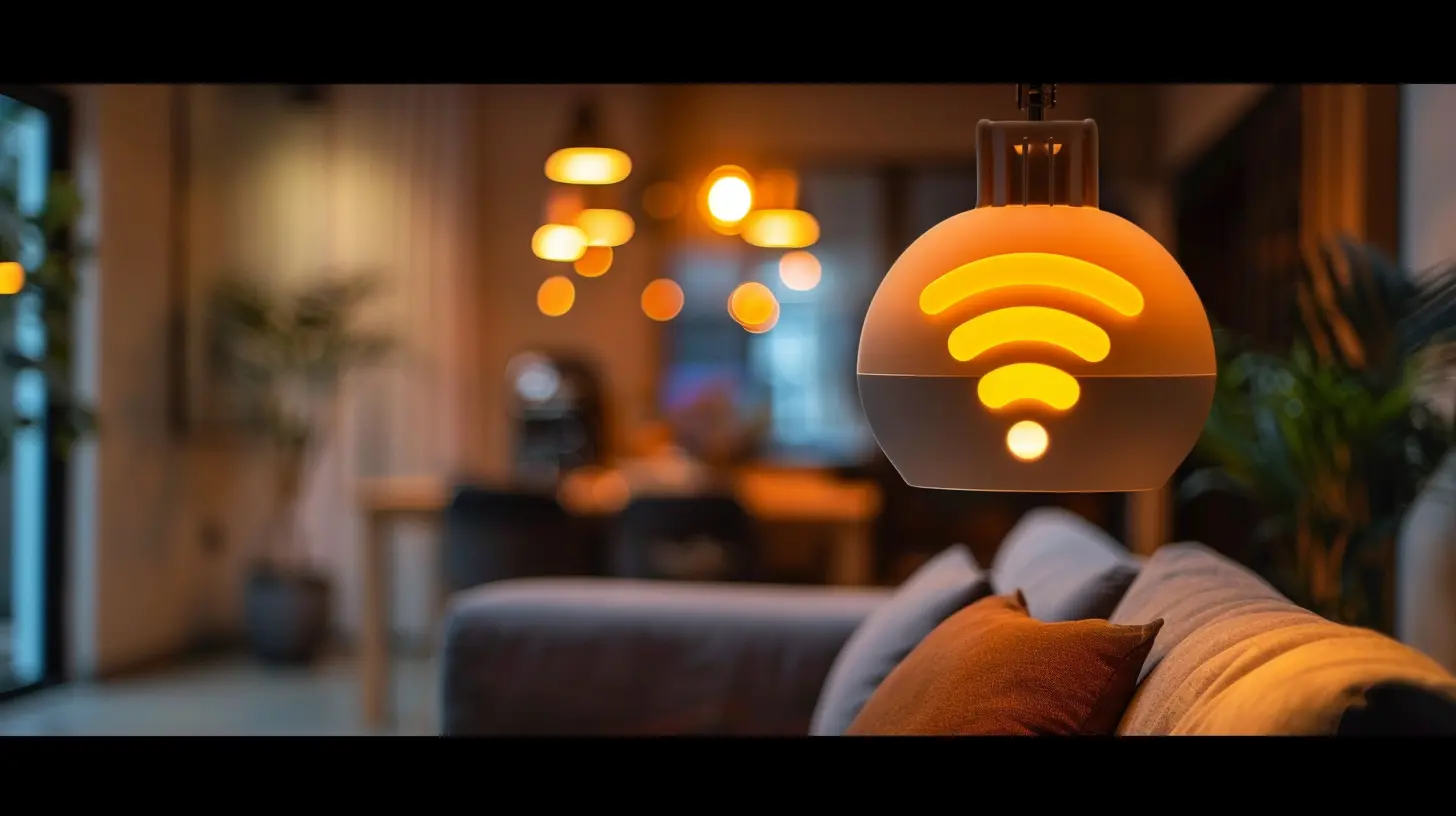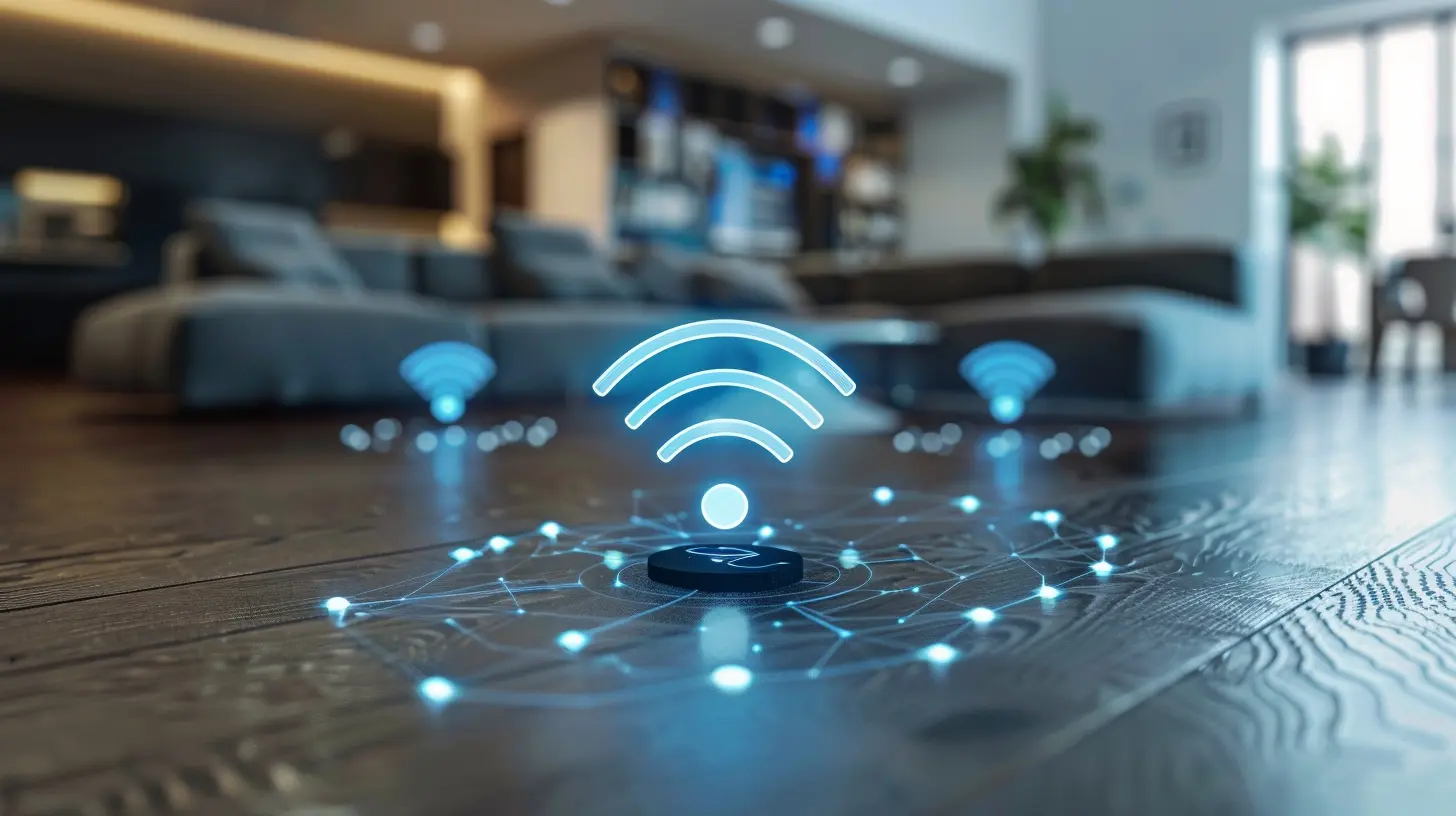Why Li-Fi Could Soon Replace Wi-Fi in Your Home
12 November 2025
The days of relying on Wi-Fi for internet access may be numbered. A new technology—Li-Fi—has emerged as a game-changer, promising faster speeds, improved security, and reduced interference. But what exactly is Li-Fi, and why could it soon replace Wi-Fi in your home? Let’s break it down.

What is Li-Fi?
Li-Fi (Light Fidelity) is a wireless communication technology that uses visible light to transmit data instead of radio waves like Wi-Fi. It was first introduced by Professor Harald Haas in 2011, and since then, researchers and tech companies have been working on refining and implementing this revolutionary concept.Unlike Wi-Fi, which depends on routers and radio frequencies, Li-Fi transmits data through LED lights, converting them into high-speed wireless communication sources. Essentially, any LED bulb in your home could become an internet transmitter. Mind-blowing, right?

How Does Li-Fi Work?
Li-Fi operates using a simple yet ingenious method. Here’s how it works:1. LED Bulbs Act as Transmitters – Li-Fi-enabled LED lights flicker at extremely high speeds—imperceptible to the human eye—to transmit data.
2. A Receiver Captures the Data – Devices equipped with photodetectors (light sensors) receive the flickering light signals and convert them back into internet data.
3. Superfast Transmission – Since light waves travel much faster than radio waves, data is transmitted at speeds far greater than those offered by traditional Wi-Fi.
So, instead of relying on congested radio frequencies, imagine downloading files at lightning speed just by sitting under a ceiling light. Sounds futuristic? The future is already here.

Why Li-Fi Could Soon Replace Wi-Fi
1. Blazing Fast Speeds
Let’s talk about speed because, honestly, who doesn’t want faster internet? Li-Fi has been tested to deliver speeds exceeding 224 Gbps in lab conditions. To put that into perspective, that’s over 100 times faster than the best Wi-Fi speeds we have today.Imagine downloading an entire HD movie in just a fraction of a second. Whether you're gaming, streaming, or working from home, Li-Fi offers data transmission rates that leave Wi-Fi in the dust.
2. Unmatched Security
Wi-Fi signals pass through walls, which is convenient but also makes them vulnerable to hacking. Anyone within range can potentially tap into your network.Li-Fi, on the other hand, is confined to the illuminated area. Light does not penetrate through walls, meaning that your internet connection stays within the room. Unless someone is physically present in your space, they can't hack into your Li-Fi network. That’s top-tier security without any extra effort.
3. Less Congestion & Interference
Ever noticed how your Wi-Fi slows down when too many devices are connected? That’s because Wi-Fi operates on limited radio frequencies, which can get overcrowded in areas with multiple networks.Li-Fi uses an entirely different spectrum—the visible light spectrum—which is 10,000 times larger than the radio frequency spectrum. That means no more interference, no signal drops, and no lag, even in densely populated areas.
4. Better Performance in High-Density Areas
Think about places like stadiums, airports, or subway stations where Wi-Fi struggles due to high demand. Li-Fi can provide high-speed internet without lag, ensuring everyone gets a solid connection, even in crowded spaces.5. Energy Efficiency & Sustainability
Li-Fi doesn’t require extra power-hungry routers. Since it works with LED bulbs—which you’re already using for lighting—you're essentially getting internet without additional energy consumption.Also, LED lights are highly energy-efficient, making Li-Fi a sustainable alternative to traditional Wi-Fi systems. It's a win-win for both the environment and your electricity bill.
6. No Electromagnetic Interference
Hospitals, airplanes, and industrial settings often experience issues with Wi-Fi due to electromagnetic interference. Li-Fi, however, doesn’t emit radio waves, making it a perfect fit for environments where radio frequency signals can be problematic.7. Bridging the Digital Divide
Li-Fi could be a game-changer for regions with poor Wi-Fi infrastructure. Since LED lights are more widely available than fiber optics in many developing areas, Li-Fi could bring high-speed internet to remote and underserved regions with minimal infrastructure upgrades.
Potential Challenges of Li-Fi
Of course, no technology is perfect. While Li-Fi holds a ton of promise, it also comes with a few challenges:- Line-of-Sight Dependency – Since Li-Fi relies on light, it requires a direct line of sight to function optimally. If you move into a dark room or block the light source, you lose connectivity.
- Limited Range – Unlike Wi-Fi, which can cover an entire home with one router, Li-Fi signals are confined to the range of light. This means you might need multiple Li-Fi-enabled LED bulbs throughout your home.
- Device Compatibility – Since most current devices don’t have built-in Li-Fi receivers, adopting this technology may require new hardware or adapters.
While these challenges exist, advancements in smart lighting and Li-Fi-enabled devices are already addressing many of these issues.
When Can We Expect Li-Fi in Our Homes?
Li-Fi technology is not just a concept—it’s becoming a reality. Several companies and researchers are actively working on making it commercially available. In fact, the IEEE (Institute of Electrical and Electronics Engineers) has already standardized Li-Fi under the 802.11bb standard.Major tech giants, including Apple and Signify (formerly Philips Lighting), are exploring Li-Fi applications, which suggests that Li-Fi-enabled devices could hit the market sooner than we think.
While widespread adoption may take a few more years, it’s not a question of if but when Li-Fi will become a household staple. The advantages are simply too powerful to ignore.
Final Thoughts
Li-Fi is poised to revolutionize how we access the internet. With unparalleled speed, enhanced security, zero interference, and eco-friendly benefits, it’s clear why many believe that Li-Fi will replace Wi-Fi in the near future.While some technical hurdles remain, the rapid advancements in this field suggest that we may soon be surfing the web using nothing more than our everyday LED lights. So, the next time you switch on a light bulb, just imagine—it might one day power your internet connection, too!
all images in this post were generated using AI tools
Category:
Tech TrendsAuthor:

Reese McQuillan
Discussion
rate this article
1 comments
Josie Benson
Light could soon redefine connectivity—are you ready?
November 12, 2025 at 4:04 AM


